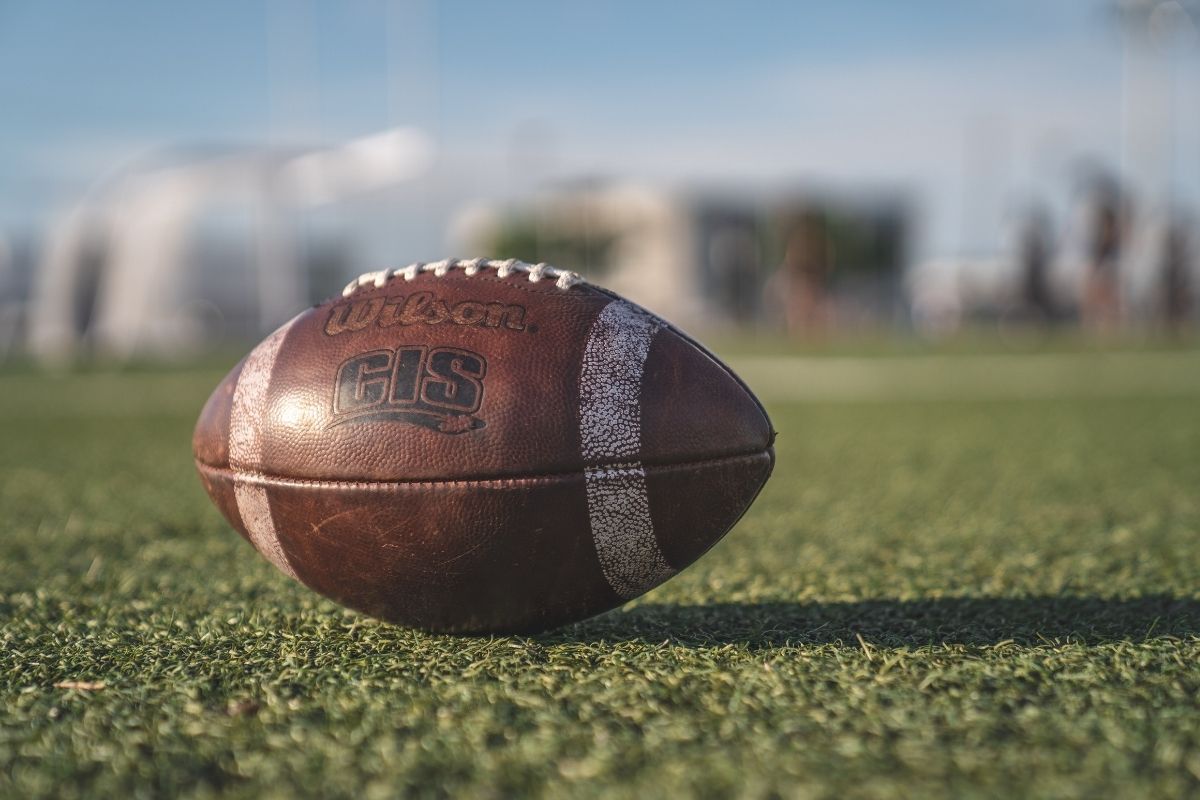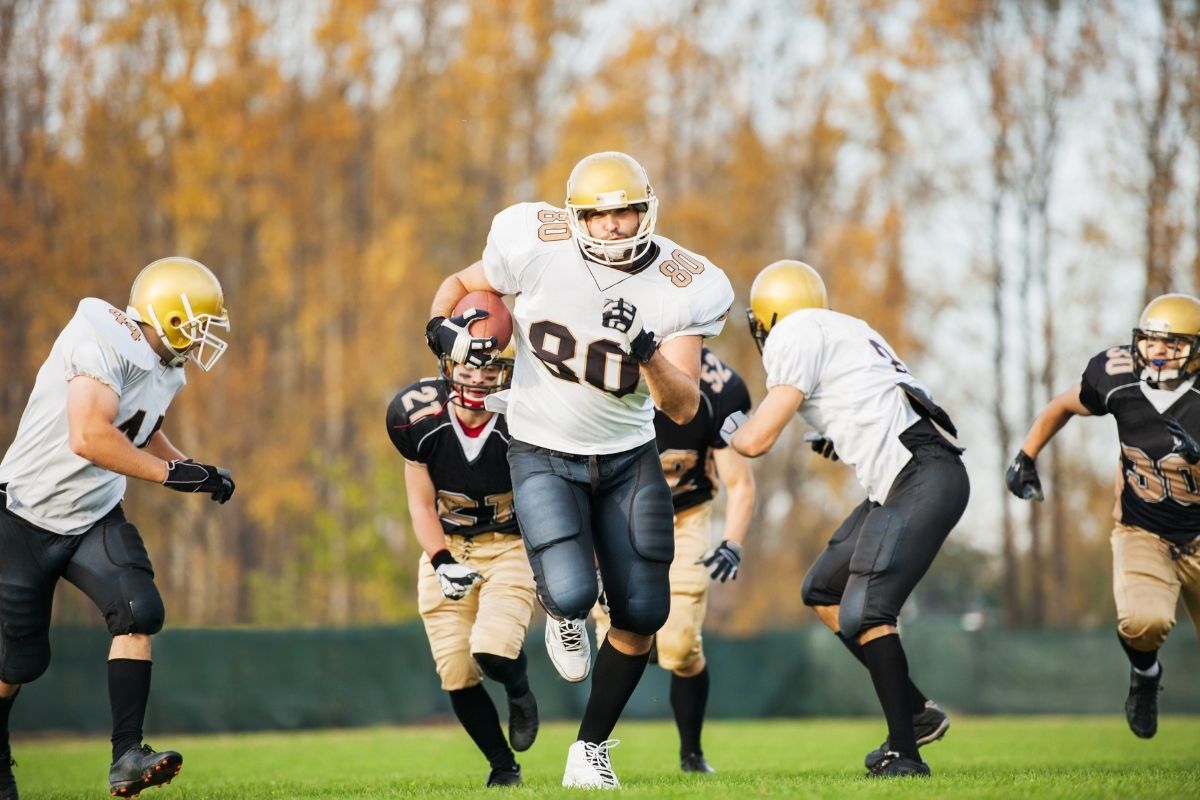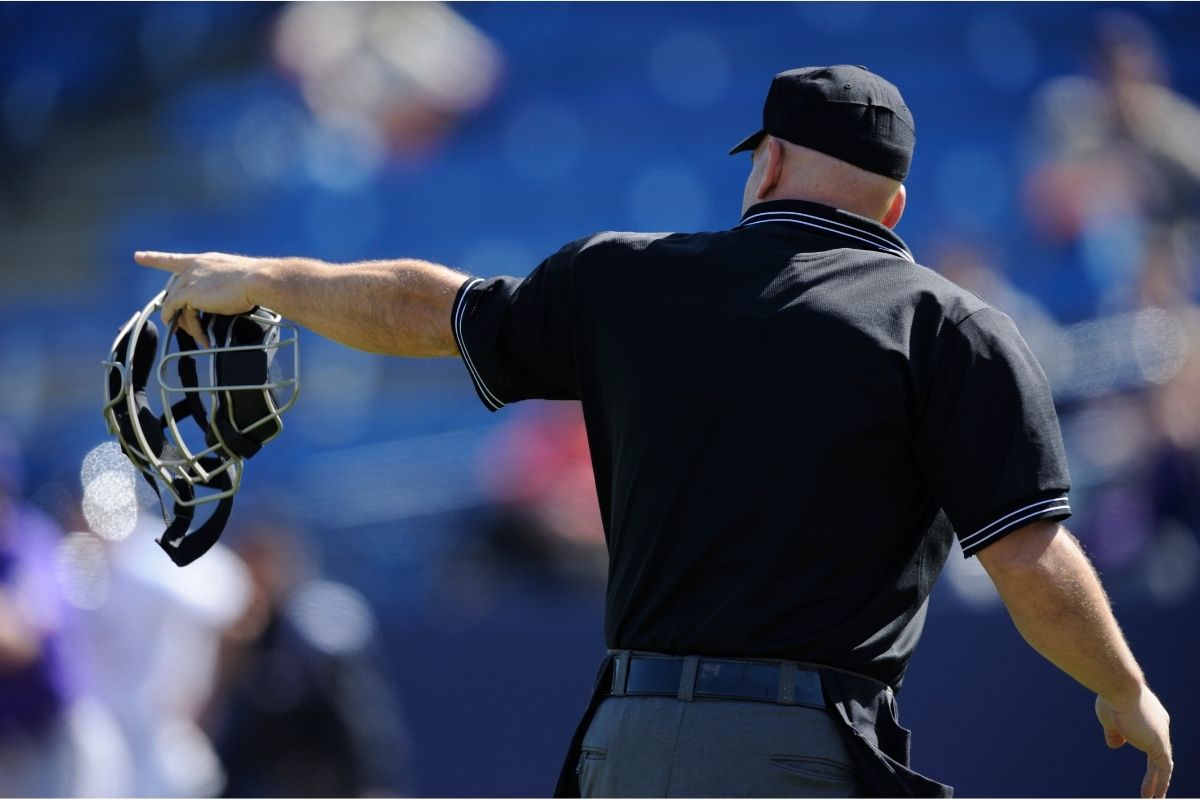American football is one of the most popular sports played and watched across the United States, but there are a lot of rule differences between different leagues.
Then, if you consider ameture games, highschool football and college football, the differences can start to blur together until you can’t tell them apart anymore.


Here, we are going to go through all the major differences between NFL football and college football.
This way, you can learn more about why certain decisions are made in each type of football and why the same actions can have different results between these two different types of sport.
So, let’s dive in!
Rules
Obviously, one of the biggest differences between NFL and college football is the rules. While the basics are all still there, there are some major rule differences between the two.
One huge rule difference concerns players being in bounds.
In the NFL, a receiver needs both feet within bounds so they can complete a pass but in college football, a receiver only needs one foot in bounds to complete a pass.
Another rule difference is that the clock doesn’t stop after a first down in NFL while it does in college football, allowing the chain crew to get into position.
Also, contact is not necessary to be ruled down in college football while it is in the NFL.
The defensive holding penalty is 5 yards in NFL but it is 10 yards in college football. College football cannot end in a tie but NFL games can.
Although these rules may seem small on their own, they all build up to create two very different games with different outcomes if they were played by different sets of rules.
So, it’s important to understand that the rules of college football and NFL football are very different and they definitely influence the end result of both games.
Overtime
As we said earlier, NFL games can end in a tie but college football games cannot. This has resulted in very different overtime rules for both types of football.
In college football, teams will continue playing until there is a winner and each period will offer both teams an equal opportunity for possession.


Who goes first is determined by a coin toss and the winner of the coin toss decides if they want to play offense or defense first. Overtime is not timed in college football.
However, in the NFL, overtime is treated very differently.
The game keeps going in periods of 15 minutes until a team scores. If time runs out, then the game is declared a tie but this is a rare outcome.
Teams, Players And Rosters
This major difference between NFL and college football can come as a surprise to some people as college teams usually have nearly twice as many players as NFL teams.
In NFL football, teams are limited to 53 players for game days but the NCAA Division I teams can allow college teams to have up to 105 players – that’s a huge difference in roster size!
Not only that but college football is a pretty huge league with 130 unique teams from different universities, academies and, of course, colleges.
These teams are divided up into 10 conferences.
NFL football has 32 teams that make up the league and these are divided into eight divisions.
However, you can also argue that NFL football uses better quality players because these are professionals with years of training and experience.
So, that is another major difference between NFL football and college football!
Playoffs
After the regular season is over, the playoffs start but while NFL football will have multiple playoffs, college football will only have one – the College Football Playoff.
This makes it easier to predict the winners in college football whereas NFL teams have a second opportunity to prove themselves by winning their playoffs in their division.
College football teams? Not so much – you guys have one shot and that’s it (no pressure).
Jersey Numbers
This is another difference that can catch out spectators who are used to viewing NFL football because the numbers on the players’ jerseys in NFL football actually have meaning.
Players whose jersey numbers are in the 20s, 30s or 40s are running backs or defensive backs, while players whose jersey numbers are in the 80s or the teens are wide receivers.


This makes it way easier for signal-callers and coaches to know who is who on the pitch, so players and their roles can be identified.
This makes it faster for coaches to strategize and work out what is happening on the field.
However, in college football, the players can choose any number they want to wear and this can lead to overlaps.
The numbers on the jerseys in college football are completely randomized which can be super confusing if you are used to watching NFL football and every player having a specifically chosen jersey number.
Instant Replay
Instant relay is a relatively new addition to American football but while both NFL and college football utilizes this technology, they do so in different ways.
In the NFL, turnovers, scoring plays, overtime periods, and plays during the final two minutes of both halves of the game are subjected to a booth review.
Whereas, in college football, all plays are.
Also, coaches in the NFL are allowed two challenges so they can require a review. In college football, coaches only have one challenge per game.
Conclusion
And that’s it! Those are all the major differences between NFL football and college football!
As you can see, there are many differences that go beyond just basic rules and regulations.
Not only do these changes have a huge effect on the outcome of a football game, they can also affect how the whole season works when it comes to playoffs.
So, check out the above changes and keep them in mind next time you switch between watching or playing an NFL football game and a college football game.
- Can You Play Pickleball on Grass? Tips and Tricks - June 12, 2023
- Do Pickleballs Wear Out? Everything You Need to Know - June 12, 2023
- Can You Play Pickleball on Concrete? A Guide to Playing on Hard Surfaces - June 12, 2023








